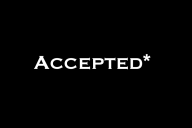You have /5 articles left.
Sign up for a free account or log in.
In an earlier post, I discussed ways in which college instructors can use gender-inclusive pedagogical techniques in their classes, offering specific practices that professors might use to create a trans-inclusive environment in their classroom. In this essay, I offer additional advice for professors to develop curricula that are inclusive of transgender and gender nonconforming (GNC) individuals. I draw from personal experiences as a nonbinary trans person, as well others’ writing about curriculum development.
My Experiences
My college course experience consisted mainly of white, cishet (i.e., cisgender, heterosexual) men instructors who assigned readings by white, cishet men authors. Even in classes taught by women instructors who attempted to make their curricula representational -- including some transgender authors -- the work was often narrow in focus. Most of these essays were coming-out stories, and anecdotal experiences and views were seen to represent the authors’ entire community.
The learning objectives of those readings were not made clear from the start of the course. Discussions of the readings typically devolved into inappropriate probes into the personal lives of trans and GNC authors, usually regarding their personal anatomy and sexual experience. The readings were also usually relegated to their own section in the syllabus, so that two sessions out of the entire semester might touch reflect on trans and GNC voices.
The few times that I did encounter a multiplicity of voices were in classes dedicated entirely to them, such as Gay Fiction of East Asia or Gender in Chinese History. While it may not be immediately obvious as to why these types of courses are problematic, they illuminate the ways in which curricula communicate and reinforce hierarchies of power. Intentionally or not, these curriculum choices exoticize, tokenize and discipline the experiences of transgender and GNC folk in various ways.
Problems
Chandra Talpade Mohanty has written about three models of courses when it comes to feminism -- an analysis that is applicable to, and helps me to identify the problems inherent in, the aforementioned approaches to supposedly gender-inclusive curricula.
A course in which trans or GNC voices are presented in single, exclusive unit of the syllabus is what Mohanty calls the tourist model. This approach uses the voices of the Other to try to diversify the otherwise homogenous curricula. It perpetuates normative assumptions about power hierarchies; it assumes that the students reading are cishet. The cishet students are separate from the trans and GNC voices they read. Cishet students simply “visit” the experiences of trans and GNC folks without having to engage with them on their own terms.
When trans and GNC students are present in these classes, it can be marginalizing for them. I had this experience in one of my college courses. As the only out trans student, I was asked to confirm or deny the experiences of someone else, as if I was the single representative for the entire trans community. As a white trans person living in the northern part of the United States, I shared none of the experiences of the black transfemale author living in the Deep South. Tourist classes maintain the dominant cishet power structure and reiterate normative assumptions about folks on the margins of society. Because students are separated from the material, they are not forced to engage the reality of the social complexities these texts are meant to highlight.
A course in which the voices of the Other are the sole ones highlighted is what Mohanty calls explorer model classes. These are often recognizable by their titles, like the ones I mentioned above. Explorer model classes posit the experiences of Other in contrast with normative ones. Students perceive what they do and the information that they learn in “regular” classes as normal, and the trans and gender-nonconforming folk in these classes as exotic, strange or deviant. Intentionally or not, these classes perpetuate and reinforce “us/them” dichotomies. By being offered separately, the voices presented in these courses are not seen as relevant to mainstream education.
Solutions
So how can professors avoid these curriculum pitfalls? I recommend that instructors provide varied, sometimes conflicting trans and GNC voices so that students can engage and connect with the content more deeply. Cishet student may not normally connect with the story of a trans or GNC person if their experiences or views are too different from their own. Similarly, cishet students may take the narrow views and experiences offered as representative of the whole community, reaffirming their previously held beliefs. By providing a wide variety of trans and GNC voices, cishet students should be better able to find an experience or view with which they connect; they can engage with the complexities of the trans and GNC community by seeing that we are as varied as mainstream society.
In this light, instructors should avoid focusing solely on anecdotal accounts like coming-out stories or representations of trans and GNC people that are exclusively positive or negative. Coming-out stories make the experience of the author personal, which has its place in connecting the cishet world with our experiences. However, focusing solely on this aspect of a person’s life ignores the broader systems of power and oppression -- namely cissexism and transphobia. Students can’t properly understand coming out without the social context that is cisnormative (wherein each individual’s gender is assumed to correspond to their sex assigned at birth, either male or female) and cissexist (wherein trans and GNC people face systematic violence, discrimination and exclusion).
For example, my own coming-out story is mostly positive. My family and friends were quick to accept and support me. From this angle, all looks well, but it excludes the unemployment and inaccessibility to proper health care that came with coming out as trans. The complexities of our lived experiences as trans or GNC people are not highlighted, and opportunities for conversations on equity and justice are missed.
Mohanty calls a more nuanced and exhaustive approach to inclusion the solidarity model. A course that uses this approach focuses on the links and intersections between different groups, topics and histories. This approach helps students see the connections between the classroom and the real world by emphasizing what she calls “relations of mutuality, co-responsibility and common interests, anchoring the idea of feminist solidarity.” By focusing on intersections among class, nation and race, (cishet) students are better able to grasp the interconnectedness of marginalized folks’ existence. They walk away with a deeper, more realistic understanding of the diverse experiences within trans and GNC communities.
In sum, curriculum design can unintentionally reinforce gender hierarchies and exclusion. Instructors who wish to resist the status quo in their curricula must take care to provide a variety of trans and gender-nonconforming voices in ways that do not exoticize or tokenize their experiences. By following the tips above and establishing a clear connection between trans and GNC perspectives and the broader learning goals and objectives of a course, students will be able to engage with the material and begin to move beyond the gender binary.




